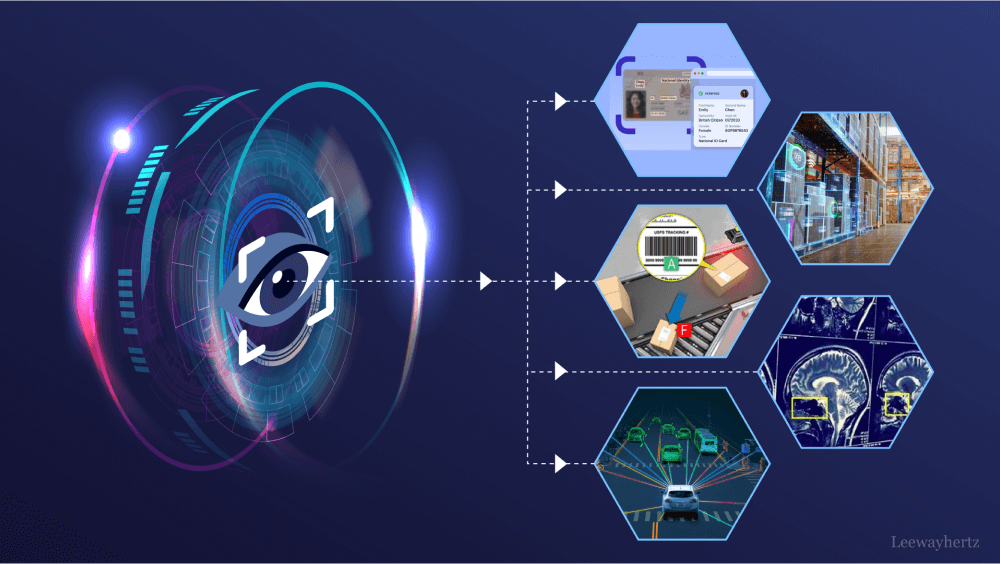Computer vision is a field of artificial intelligence (AI) that enables machines to process, analyze, and interpret visual data, such as images and videos. Think of it as giving computers the ability to “see” and make sense of the world through cameras, sensors, and algorithms. Whether it’s identifying objects, detecting patterns, or even reading text in real-time, computer vision is the backbone of countless modern technologies. Read more: https://www.ibm.com/think/topics/computer-vision
Why Computer Vision Matters
In today’s fast-paced, tech-driven world, computer vision is revolutionizing industries. Here’s why it’s a big deal:
Healthcare: From detecting tumors in medical scans to assisting surgeons with real-time insights, computer vision is saving lives.
Automotive: Self-driving cars rely on computer vision to detect obstacles, read road signs, and navigate safely.
Retail: Smart cameras analyze customer behavior, optimize store layouts, and even enable cashier-less checkouts.
Security: Facial recognition and surveillance systems enhance safety in public spaces.
Entertainment: Augmented reality (AR) and virtual reality (VR) apps use computer vision to create immersive experiences.
The possibilities are endless, and businesses are racing to harness this technology to stay ahead.
The Building Blocks of Computer Vision Development
So, how do developers create systems that can “see” ? Computer vision development involves a mix of cutting-edge tools, algorithms, and creativity. Let’s break it down:
Data: The Fuel for Vision
Every computer vision model needs high-quality data—think thousands (or millions) of labeled images or videos. For example, to teach a model to recognize cats, developers feed it countless cat images labeled as “cat.” This process, called data annotation, is critical for training accurate models.
Algorithms and Models
At the heart of computer vision are machine learning models, particularly deep learning models like Convolutional Neural Networks (CNNs). These algorithms mimic the human brain, learning to identify patterns in visual data. Popular frameworks include:
- TensorFlow: Google’s open-source library for building and training models.
- PyTorch: A favorite among researchers for its flexibility.
- OpenCV: A go-to library for real-time computer vision tasks.
Hardware: Powering the Vision
Computer vision models are computationally intensive. Developers often rely on powerful GPUs (Graphics Processing Units) or TPUs (Tensor Processing Units) to train models efficiently. Cloud platforms like AWS, Google Cloud, and Azure also provide scalable solutions for vision projects.
Applications and Use Cases
Once trained, computer vision models can tackle tasks like:
- Object Detection: Identifying and locating objects in images (e.g., YOLO or Faster R-CNN).
- Image Classification: Labeling images (e.g., “dog” or “cat”).
- Facial Recognition: Verifying identities for security or personalization.
- Optical Character Recognition (OCR): Extracting text from images or scanned documents.
Challenges in Computer Vision Development
While computer vision is exciting, it’s not without hurdles. Developers face challenges like:
- Data Quality: Poorly labeled or biased datasets can lead to inaccurate models.
- Computational Costs: Training complex models requires significant resources.
- Real-World Variability: Lighting, angles, and occlusions can confuse models.
- Ethical Concerns: Facial recognition and surveillance raise privacy and bias issues.
Addressing these challenges requires innovation, collaboration, and a commitment to ethical AI practices.
The Future of Computer Vision
The future of computer vision is brighter than ever. With advancements in AI, we’re seeing trends like:
- Edge Computing: Running computer vision models on devices like smartphones or IoT gadgets, reducing reliance on cloud servers.
- Explainable AI: Making models more transparent to build trust and address ethical concerns.
- Generative Vision: Creating realistic images or videos using models like DALL·E or Stable Diffusion.
- Multimodal AI: Combining vision with text or audio for richer interactions (think AI assistants that see and hear).
As 5G and IoT technologies expand, computer vision will become even more integrated into our daily lives, from smart homes to personalized shopping experiences.
Computer vision development is reshaping how we interact with technology, from smarter cars to safer hospitals. By combining data, algorithms, and creativity, developers are unlocking the power of visual intelligence. Whether you’re a beginner or a seasoned pro, there’s never been a better time to jump into this exciting field. So, grab your laptop, start experimenting, and join the vision revolution!
Read more: https://blog.makaiindustry.com/2025/05/09/hybrid-multi-cloud-environments/
Ready to start? Check out free resources like OpenCV tutorials or Kaggle datasets, and let your computer vision journey begin!
